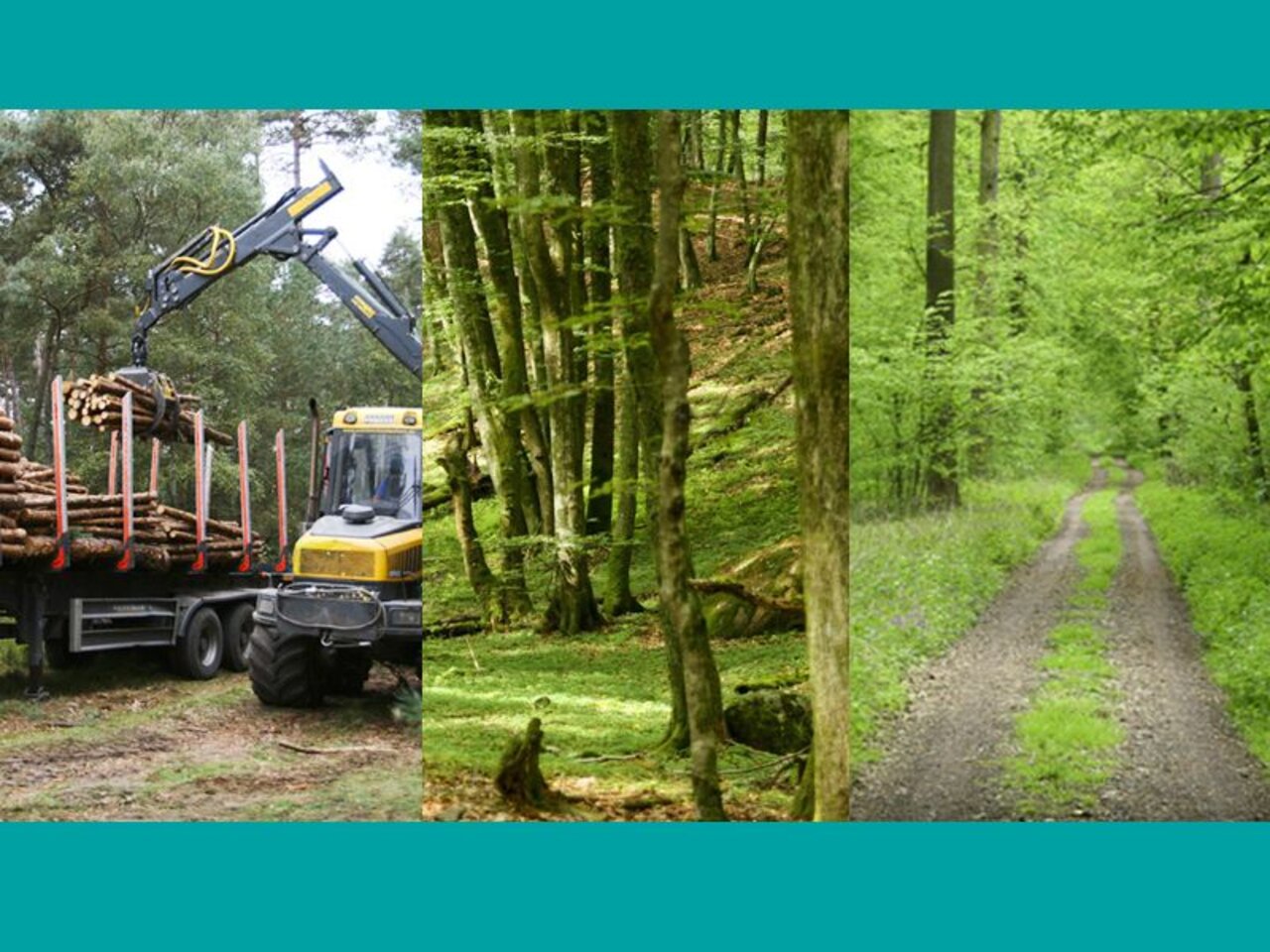Project
WEHAM-Scenarios - Work package 4: Sustainability assessment

Assessment of the sustainability of different forest management and timber use scenarios, with emphasis on climate protection and biodiversity conservation. Work package 4: Sustainability assessment
How will the implementation of the various requirements of German society affect the future forest cultivation and timber use? How sustainable are the forest management scenarios developed together with the stakeholders in Work package 1 and 2?
These questions were examined in Work package 4: “Sustainability assessment” of the joint research project WEHAM-Scenarios.
Background and Objective
„Work package 4: Sustainability assessment” is based on “Work package 1: Stakeholder participation process” and “Work package 2: “Development of WEHAM scenarios”. In Work package 1: "stakeholder participation process", we determined the current demands of the stakeholders in regard to future forest management and timber use in Germany. In Work package 2: “Development of WEHAM-scenarios” we condensed these demands to forest management and timber use scenarios. In Work package 4: “Sustainability Assessment" the scenarios were evaluated in regard to their long-term economic, social and environmental impacts.
Approach
By means of criteria and indicators, we first conducted a sustainability assessment of WEHAM scenarios from the perspective of different stakeholders. The results of this analysis were then compared with social sustainability strategies.
Additionally, we investigated how the forest management and timber use alternatives desired by stakeholders would affect the supply of raw timber in Germany and, in consequence, the domestic wood processing and the timber market.
In a final step, we studied the long-term natural and economic consequences of the implementation of the forest management alternatives. Here, we also analyzed the effect of forest enterprise adaptation measures to climate change, for example, the change of tree species proportions.
Our Research Questions
What would be the economic, environmental and social consequences of the change in the forest structure and the amount of raw wood as modelled in the WEHAM-Scenarios?
Results
The sustainability assessment showed differences and similarities in the sustainability understanding of the stakeholder groups. While for the timber use oriented stakeholder groups the FOREST-Timber Preference Scenario in combination with the TIMBER-Promotion Scenario shows a more sustainable development, the nature protection oriented groups regard this combination as less sustainable. Almost the opposite is true in the FOREST-Nature Conservation Preference Scenario combined with the TIMBER-Restriction Scenario. The WEHAM Basic Scenario, combined with the TIMBER-Reference Scenario, is the "golden mean" among stakeholders in respect to sustainability. However, the survey also shows unexpectedly high compliances between the groups.
The analysis of the impact of different raw wood potentials on production and foreign trade in Germany showed that the domestic production of raw wood for material use for both soft- and hardwood is potentially increasing. The demand for softwood for material use exceeds the domestic production in every scenario. Net imports vary greatly depending on the simulated production volume of the timber processing sector. Depending on the domestic availability of raw wood for material use, the production output of the timber processing industry also increases. However, domestic consumption of wood-based goods by consumers is not affected by varying production volumes. Produced surplus quantities from the first processing stage are therefore exported.
With regard to the economic impact of the forest management and timber use scenarios, it has been shown that long-term increases in revenues in the FOREST-Timber Preference Scenario are possible due to the increased introduction of the high-yielding tree species Douglas fir. On the other hand, in the FOREST-Conservation Preference Scenario, long-term reductions of revenues are to be expected due to large-scale conversion of softwood to hardwood, by increasing the land set aside areas and by increasing production cycles. In all three timber use scenarios, an increase in value added and employment is possible through increased use of timber. The highest increase is achieved in the TIMBER-Promotion Scenario, the slightest increase in the TIMBER-Restriction Scenario.
Thünen-Contact

Involved Thünen-Partners
Funding Body
-
Federal Ministry of Agriculture, Food and Regional Identity (BMLEH)
(national, öffentlich) -
Federal Ministry for the Environment, Nature Conservation, Building and Nuclear Safety (BMUB)
(national, öffentlich)
Duration
10.2014 - 6.2017
More Information
Project funding number: 28W-C-4-043-01
Funding program: Waldklimafonds (Programmbestandteil des Sondervermögens Energie- und Klimafonds)
Project status:
finished
List of Publications
- 0
Schier F, Weimar H (2018) Holzmarktmodellierung - Szenarienbasierte Folgenabschätzung verschiedener Rohholzangebotssituationen für den Sektor Forst und Holz. Braunschweig: Johann Heinrich von Thünen-Institut, 57 p, Thünen Working Paper 91, DOI:10.3220/WP1523005251000
- 1
Schier F, Morland C, Janzen N, Weimar H (2018) Impacts of changing coniferous and non-coniferous wood supply on forest product markets: a German scenario case study. Eur J Forest Res 137(3):279-300, DOI:10.1007/s10342-018-1111-6
- 2
Schier F, Weimar H (2017) Modellierung des Holzmarktes im WEHAM-Projekt. AFZ Der Wald 72(13):21-23
- 3
Meier-Landsberg E, Schweinle J (2017) Nachhaltigkeitsbewertung der WEHAM-Szenarien. AFZ Der Wald 72(13):27-29
- 4
Rosenkranz L, Seintsch B (2017) Ökonomische Analysen der Szenarien. AFZ Der Wald 72(13):24-26








